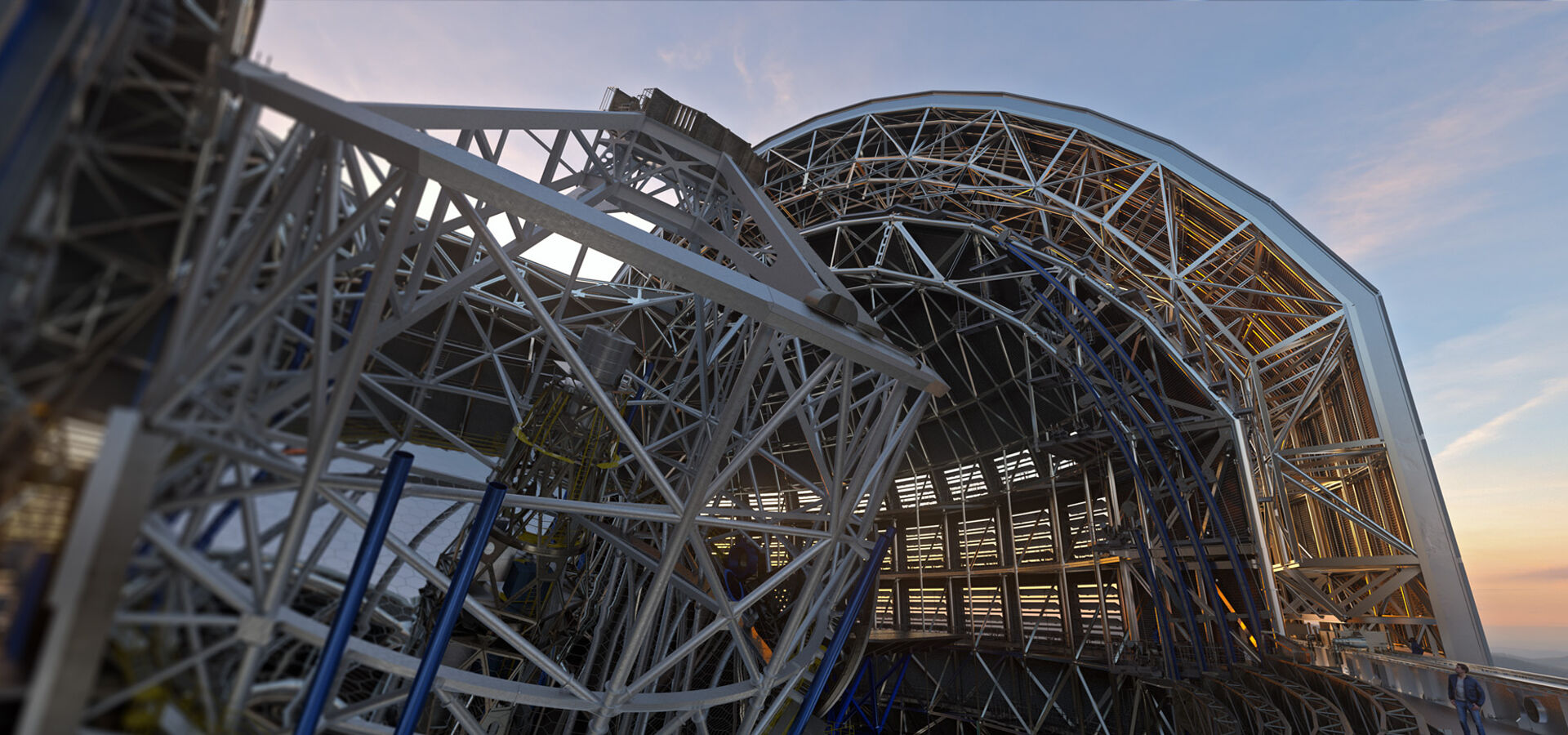
European
Southern
Observatory


The main structure of the ELT telescope will hold its five mirrors and optics, including the enormous 39-metre primary mirror.
Producing such a large structure that can hold its mirrors precisely in place and not buckle under the weight is a feat of engineering, which is essential to achieve high-quality observations.
Producing such a large structure that can hold its mirrors precisely in place and not buckle under the weight is a feat of engineering, which is essential to achieve high-quality observations.
The main structure of the ELT telescope will hold its five mirrors and optics, including the enormous 39-metre primary mirror.
Producing such a large structure that can hold its mirrors precisely in place and not buckle under the weight is a feat of engineering, which is essential to achieve high-quality observations.
The main structure of the ELT telescope supports the optics and the instruments during astronomical observations and keeps the telescope stable under all conditions, including in high winds and during earthquakes.
Its design must satisfy two conflicting demands: the structure must be stiff to keep its components stable and precisely aligned, but it must also be light enough to avoid the gigantic ELT from buckling under its own weight. Overall, when fully equipped with the optics and the scientific instruments, the telescope will weight around 4600 tons.
The horizonal part, or azimuth structure, supports the telescope tube, or altitude structure, and has two huge platforms, hosting the ELT’s scientific instruments that collect and process light from cosmic objects. These platforms are large enough to contain the entirety of one of the 8.2-metre unit telescopes of ESO’s Very Large Telescope.
The vertical part, or altitude structure, contains the ELT's five mirrors and is 50 metres tall. The impressive 39-metre primary mirror is supported at the bottom of this structure and the secondary mirror, which is about 4 metres in diameter, hangs high above it at the top of the telescope tube. The other three mirrors are in the 10-metre central tower of the telescope tube, located at the centre of the primary mirror support structure.
Both the ELT dome and the telescope structure contract are being designed and built by the Italian consortium ACe (Cimolai, Astaldi).
The function of the ELT’s telescope structure is to support the optics and the instruments while tracking astronomical objects. For this reason the ELT’s design was driven by both the need to point and track the sky as well as excellent image quality. To achieve this, the entire optical path and the instruments must be kept stable under all operating conditions, including changing temperatures and strong winds. The challenge in designing the ELT is to provide a sufficiently stiff structure for the primary mirror segments and the other optical elements, while not dramatically increasing the weight of the structure, which would limit its dynamical performance.
The design had to consider not only the astronomical performance, but also the fact that the telescope must survive Chile’s regular, strong earthquakes, without subjecting the delicate optics to strong accelerations. The earthquake protection system is located below the telescope structure. The telescope pier and the dome pier are mounted on foundations that are structurally separated, to avoid possible propagation of vibrations from affecting the image quality.
The telescope structure is an alt-az mount and is divided into two main parts: the azimuth structure and the altitude structure.
The azimuth structure supports the ELT telescope tube – or altitude structure – and the scientific instruments. The scientific instruments are positioned on the two Nasmyth platforms, each with dimensions of approximately 30 m by 15 m, a size that allows each platform to host a pre-focal station and three large instruments. A truss structure links the platforms to the ring-shaped azimuth floor. The azimuth floor covers the various mechanisms (bearings, motors and encoder) and provides a large surface for handling the telescope and access to it.
Both the azimuth and altitude axes rotate the telescope using hydrostatic oil bearings. In the azimuth axis, the telescope is rotated using these bearings arranged on three concentric tracks, and one radial track which defines the azimuth rotation axis. The largest concentric track has a diameter of 51 m, with the intermediate and central tracks having diameters of 34 m and 6 m, respectively. The tracks are bolted to the telescope pier to provide structural stability. This arrangement allows a direct load path between the azimuth structure and the pier, and provides stability to the instruments and sufficient stiffness to limit the effects of wind on the telescope. The tracks have to be aligned to a precision of just a few tenths of a millimetre over their full diameter. The dimensions of the central radial track allow lateral loads to be absorbed when earthquakes occur.
The azimuth floor allows access to the ELT telescope to install its components, with a bridge crossing the floor’s diameter below the telescope tube. The overhead crane installed in the dome allows positioning of the optomechanical elements on the azimuth floor. From here, the primary mirror (M1) segments can also be lifted for installation in the M1 cell. The optical elements within the central tower are moved on rails along the azimuth bridge, before they are lifted into their final position.
Linear motors will drive the movement of the ELT. These are distributed all along the circumference of the external azimuth track. The azimuth structure is equipped with two encoders to detect and feedback on the telescope’s motion in the azimuth axis: one at the centre used for the position loop, and one at the external diameter close to the motor, to close the velocity loop. Extensive studies have shown that this solution has the best potential for fulfilling the stringent pointing and tracking requirements because it helps overcome the dynamical deformation of the structure, which is unavoidable for telescopes the size of the ELT.
The altitude structure hosts the telescope optics, including the ELT’s five mirrors. It is composed of the enormous open telescope tube structure, which supports and connects the 39-metre primary mirror and the secondary mirror hanging above it, and the central tower. The telescope tube is structurally closed at the bottom by the M1 support structure (the M1 cell) and by the top ring, ‘spider’ and secondary mirror crown at the top.
The altitude structure rests on hydrostatic pads, arranged in two groups on each side of the telescope, creating a sort of cradle. Cylindrical tracks mounted on two semicircular plates attached to the M1 cell rest on the hydrostatic pads. The plates are perforated to allow air flushing of the primary mirror when the wind comes from a lateral direction, helping minimise air temperature differences between the primary mirror and ambient air.
The M1 cell supports the primary mirror and is a truss structure consisting of three levels. The upper part is the frame directly supporting the 798 mirror segments constituting the M1 mirror. The upper surface of the M1 cell contains openings to access and service the delicate components of the M1 segment supports, which shape the mirror’s configuration. Below the level of the M1 segments there is a walkable area used to access the location of each segment via circumferential and radial corridors. This access allows segments to be extracted for recoating and to service the M1 segment control electronics. Below the walkable plate another lattice structure provides stiffness to the M1 cell. This stiffness is needed to support the central tower of the telescope which is directly mounted at the centre of the M1 cell.
The telescope tube itself is a truss structure constructed with tubular profiles. The short focal length of the primary mirror results in a tube structure length of approximately 27 m. At the top of the tube, the top ring has a polygonal section optimised for wind resistance, manufacturability and structural performance. The M2 crown that hosts the M2 mirror unit is connected to the top ring by means of six beams, forming the ‘spider’. When all elements are considered, the total length of the altitude structure, from the bottom of the M1 support structure to the M2 crown exceeds 50 m. The Nasmyth platforms are located 27 m from the ground and the altitude axis is at a height of 33 m. When the telescope is pointing vertically upwards, the M2 crown reaches 60 m above the ground.
The linear motors of the altitude structure are arranged so that the magnets are mounted on the altitude structure and the coils of the motor are on the azimuth structure. Like the azimuth axis, the altitude axis is equipped with two encoders, one close to the motors, used for the velocity loop control and a central one for the position control loop.
The optical design provides ample room for the erection of a central tower to support the other mirrors: M3, M4 and M5.
The central tower is mounted at the centre of the M1 cell and its design presented significant challenges. Because of the space needed for the optical units and their maintenance, the space available for the beam structure itself is limited. On the other hand, the structure of this central tower needs to be rigid to ensure top performance of the telescope, especially given that it needs to support the M4 adaptive optics mirror. In addition, the mass of the tower has to be kept to a minimum to reduce deflections of the M1 cell due to gravity.
The tower is equipped with its own spider, which is composed of six beams mounted at approximately two thirds of its overall height. The spider limits the tower’s lateral bending when the telescope is tilted during observation and connects the tower to the telescope tube structure. The six beams of the central tower spider are placed in the shadow of the M2 crown spider to avoid obstructing the light’s path.
Additionally, the inner part of the tower has to be kept empty not only for the optical beam but also for the installation and removal of the optical units. Winches are installed into the tower for lifting and lowering the units to and from the azimuth bridge. Access and services inside the central tower are obtained by means of ladders. As far as possible, control electronics are located inside the M1 cell, therefore allowing slightly easier access.
We use cookies that are essential for accessing our websites and using our services. We also use cookies to analyse, measure and improve our websites’ performance, to enable content sharing via social media and to display media content hosted on third-party platforms.
The European Organisation for Astronomical Research in the Southern Hemisphere (ESO) is the pre-eminent intergovernmental science and technology organisation in astronomy. It carries out an ambitious programme focused on the design, construction and operation of powerful ground-based observing facilities for astronomy.
This Cookies Policy is intended to provide clarity by outlining the cookies used on the ESO public websites, their functions, the options you have for controlling them, and the ways you can contact us for additional details.
Cookies are small pieces of data stored on your device by websites you visit. They serve various purposes, such as remembering login credentials and preferences and enhance your browsing experience.
Essential cookies (always active): These cookies are strictly necessary for the proper functioning of our website. Without these cookies, the website cannot operate correctly, and certain services, such as logging in or accessing secure areas, may not be available; because they are essential for the website’s operation, they cannot be disabled.
Functional Cookies: These cookies enhance your browsing experience by enabling additional features and personalization, such as remembering your preferences and settings. While not strictly necessary for the website to function, they improve usability and convenience; these cookies are only placed if you provide your consent.
Analytics cookies: These cookies collect information about how visitors interact with our website, such as which pages are visited most often and how users navigate the site. This data helps us improve website performance, optimize content, and enhance the user experience; these cookies are only placed if you provide your consent. We use the following analytics cookies.
Matomo Cookies:
This website uses Matomo (formerly Piwik), an open source software which enables the statistical analysis of website visits. Matomo uses cookies (text files) which are saved on your computer and which allow us to analyze how you use our website. The website user information generated by the cookies will only be saved on the servers of our IT Department. We use this information to analyze www.eso.org visits and to prepare reports on website activities. These data will not be disclosed to third parties.
On behalf of ESO, Matomo will use this information for the purpose of evaluating your use of the website, compiling reports on website activity and providing other services relating to website activity and internet usage.
Matomo cookies settings:
Additional Third-party cookies on ESO websites: some of our pages display content from external providers, e.g. YouTube.
Such third-party services are outside of ESO control and may, at any time, change their terms of service, use of cookies, etc.
YouTube: Some videos on the ESO website are embedded from ESO’s official YouTube channel. We have enabled YouTube’s privacy-enhanced mode, meaning that no cookies are set unless the user actively clicks on the video to play it. Additionally, in this mode, YouTube does not store any personally identifiable cookie data for embedded video playbacks. For more details, please refer to YouTube’s embedding videos information page.
Cookies can also be classified based on the following elements.
Regarding the domain, there are:
As for their duration, cookies can be:
Cookie settings: You can modify your cookie choices for the ESO webpages at any time by clicking on the link Cookie settings at the bottom of any page.
In your browser: If you wish to delete cookies or instruct your browser to delete or block cookies by default, please visit the help pages of your browser:
Please be aware that if you delete or decline cookies, certain functionalities of our website may be not be available and your browsing experience may be affected.
You can set most browsers to prevent any cookies being placed on your device, but you may then have to manually adjust some preferences every time you visit a site/page. And some services and functionalities may not work properly at all (e.g. profile logging-in, shop check out).
The ESO Cookies Policy may be subject to future updates, which will be made available on this page.
For any queries related to cookies, please contact: pdprATesoDOTorg.
As ESO public webpages are managed by our Department of Communication, your questions will be dealt with the support of the said Department.